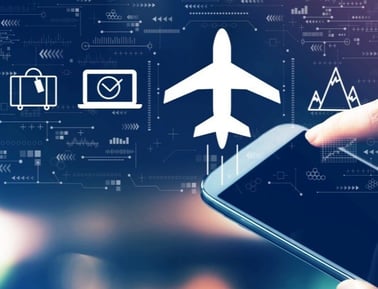The airline business, even in times of boom, is a difficult one to manage. It is capital-intensive, and is affected by changes in regional and global economy and dynamic government regulations and control. Increasing competitive pressure and rising customer expectations have forced airlines to innovate and create new revenue opportunities using digital technologies.
Going the Ancillary Way: Understanding the Risks
In the past few years, ancillaries have significantly impacted Airline’ top line as they help in increasing an airline’s share of customer’s wallets. They have also had a significant impact on the profitability of airlines. Initially started by low-cost carriers as a strategy to compensate for their discounted fares, the ancillary revenue approach has now been adopted by airlines of all sizes in this conventionally low-margin industry. It is not uncommon to see extra charges for checked-in luggage, meals onboard, seat preference, and even for using a credit/debit card different from that preferred by the airline.
A higher ancillary revenue not only allows airlines to keep their ticket prices low but also offers a way to differentiate themselves in a highly commoditized and competitive market through experiences designed to improve the quality of travel for their customers. The past decade has been about the baggage fees, preferred seats, inflight meals etc. but future growth in ancillaries revenues will come via proliferated products and services offered across channels to enhance the experience of the passengers.
Personalization is the New Face of Opportunity
Universally applicable ancillaries are no longer enough. Personalized ancillaries are the tailwinds airlines need to improve customer affinity and realize higher profits.
A granularly segmented customer persona using umpteen data points from multiple sources is the foundation of a targeted travel experience. Add to that a diversified product catalog delivering across channels for seamless and ubiquitous experience in real time and you have a perfect concoction for a personalized airline.
Studies show that personalized calls-to-action bring in 42% more sales conversions than the calls-to-action that are uniformly applied by a business. Tailored messaging through digital marketing channels and mobile apps can help in providing meaningful ancillary services that do not make customers feel nickel-and-dimed.
This has been demonstrated by airlines with higher average revenue per passenger. Such airlines have demonstrated a higher propensity to offering personalized ancillaries.
How to Roll Out Personalized Ancillaries
Airlines need to have actionable strategies to offer a desirable combination of personalized ancillaries. As a first step to this journey, airlines needs to diversify their ancillary offerings. Just seating preferences, travel insurances, and baggage are not enough. A combination of traditional ancillaries, non-air ancillaries and digital ancillaries helps in creating a diverse product portfolio, which can cater to millions of passengers boarding an airline annually.
Airlines need to slice and dice the plethora of customer data at their disposal to narrowly segment their customer. Big data platforms along with machine learning techniques can be implemented to analyze user profiles, create contextual understanding of their travel needs and provide targeted services. An Omni-channel ancillary strategy will allow seamless experience across channels (including GDS).
Furthermore, to successfully personalize and improve customer engagement airlines must react instantly to any change in expectations. These should be delivered at the most opportune moment using the most viable communication method. Smartphones, tablets, and wearable techs along with communication technologies like IoT, beacons etc allow airlines to reach their customers instantly with real-time offers.
Successful Ancillary Revenue Generation
Selling ancillaries involves showing the right products to the customers with the highest likelihood of buying at a time when they need it the most and at a place where it improves their experience. This requires a deep understanding of customers through the latest segmentation tools and technologies and communicating in real-time leveraging the booming mobile technology. It also involves integration with partners and brings their products on an airline’s customer-facing channels.
Deployed intelligently, technology can improve the ability of airlines to cross-sell and up-sell their ancillaries to increase ancillary revenue generated per passenger.




